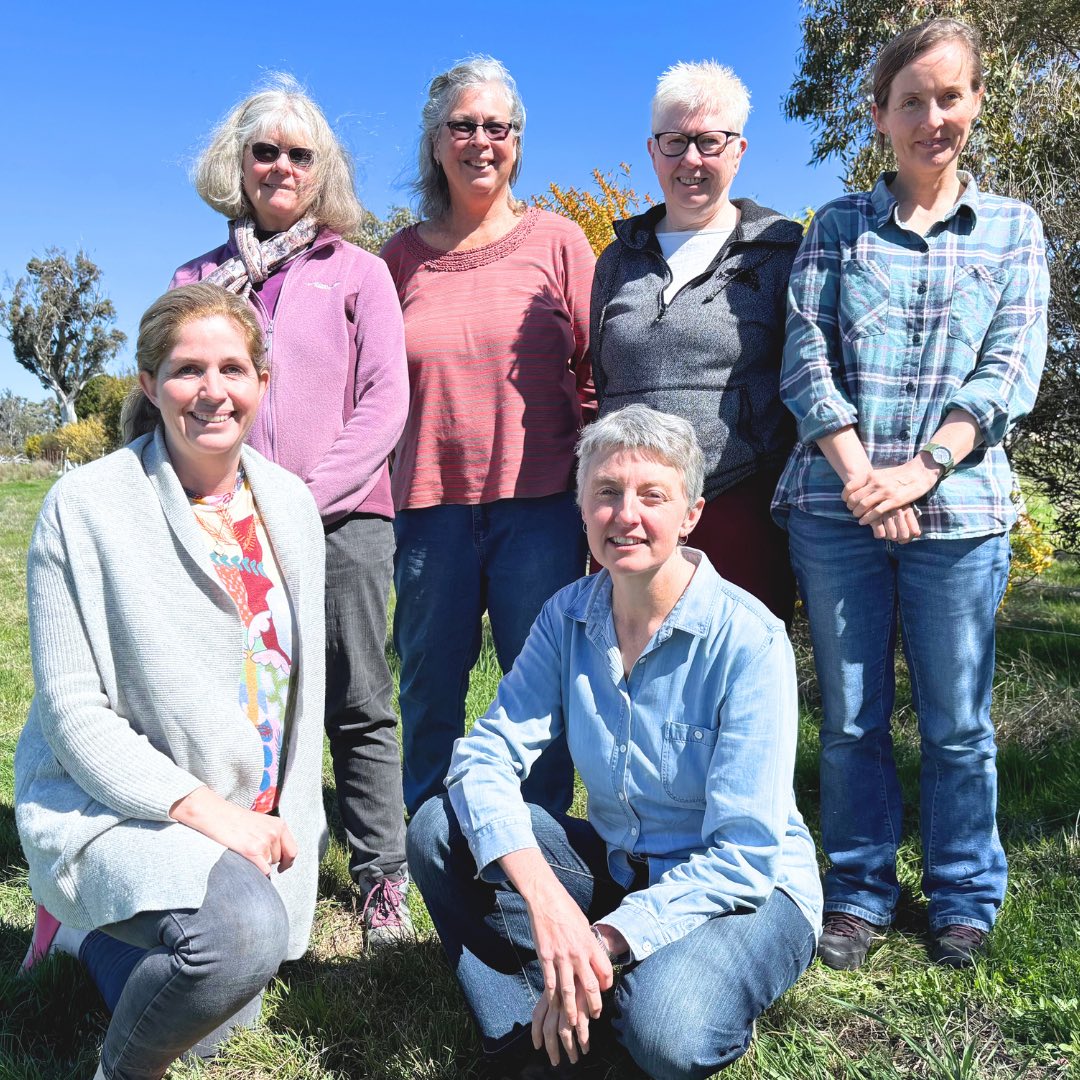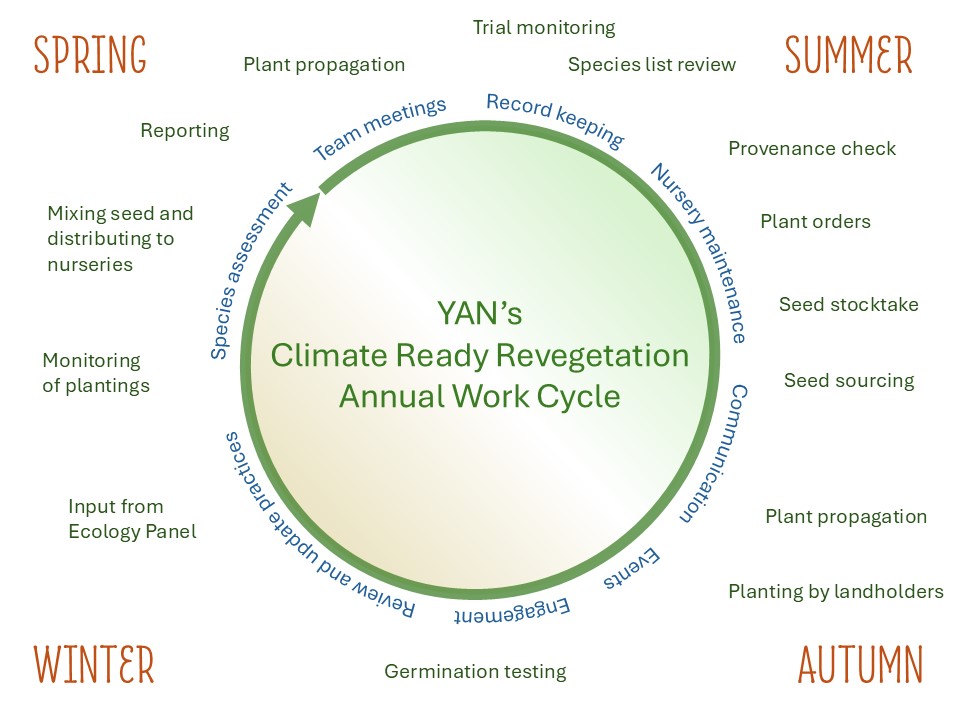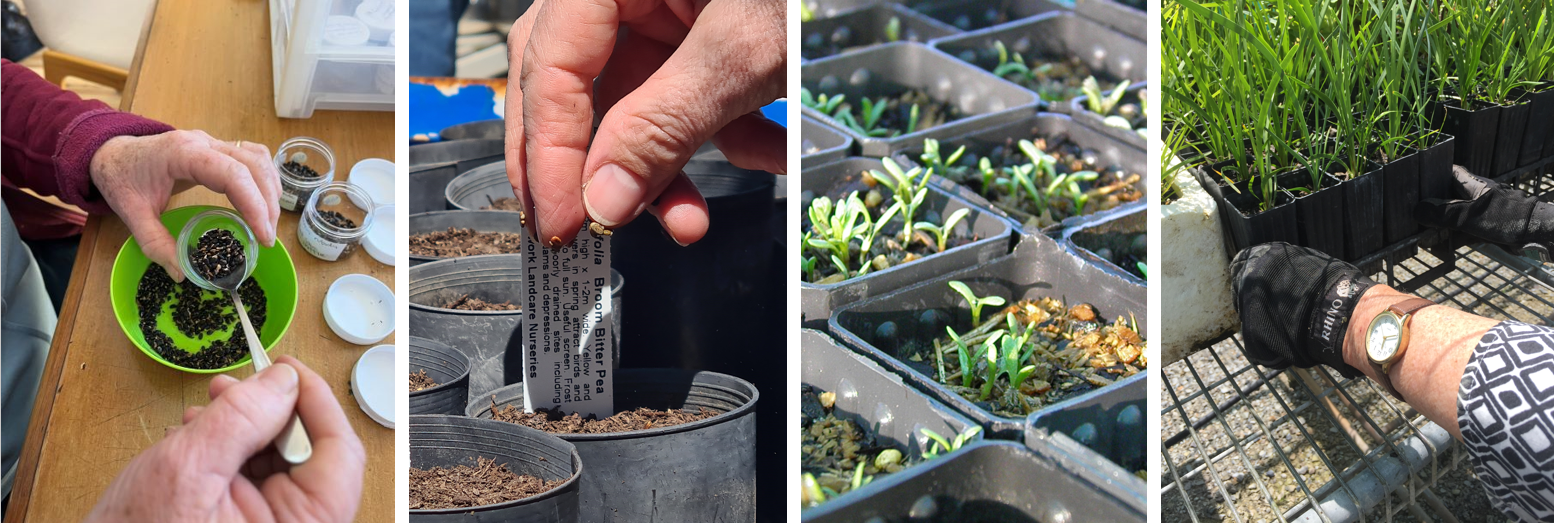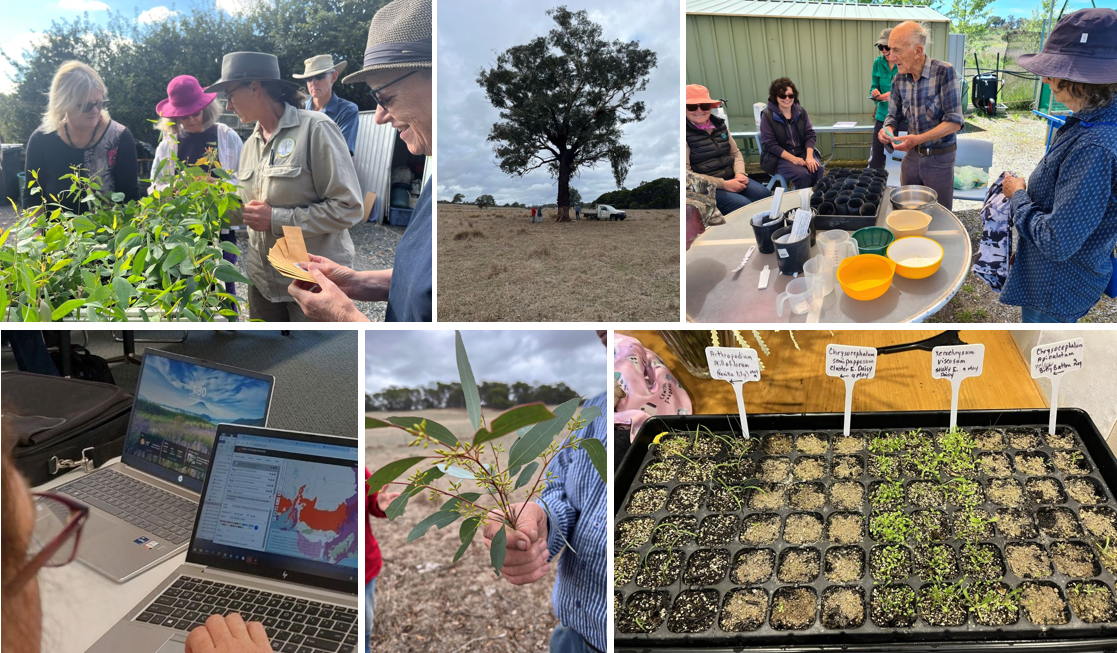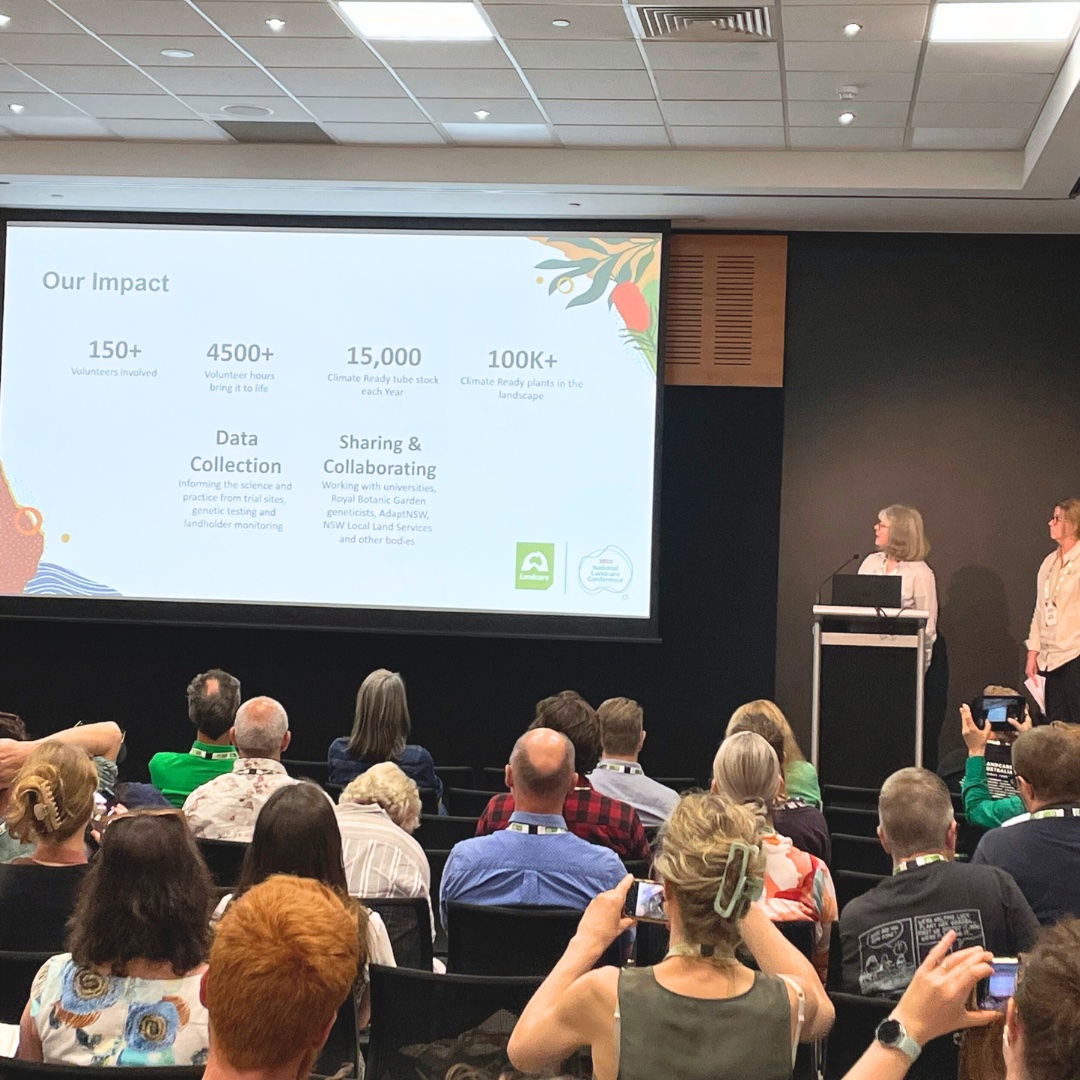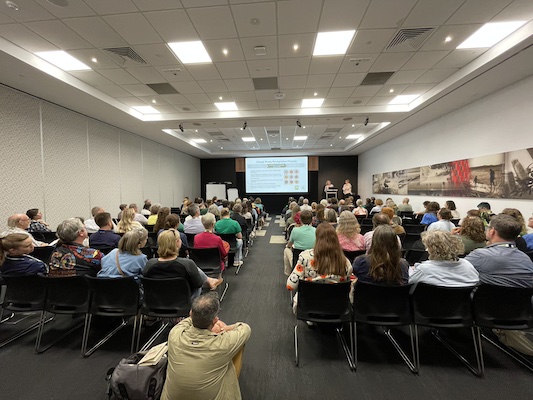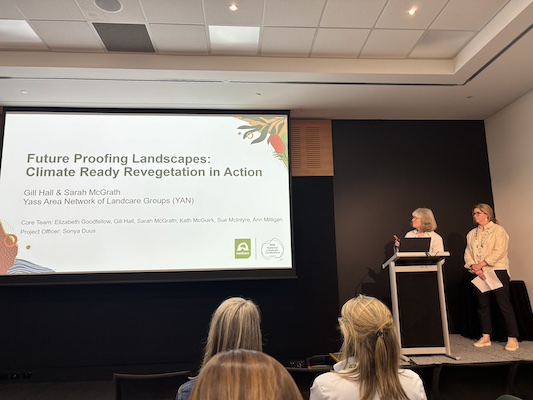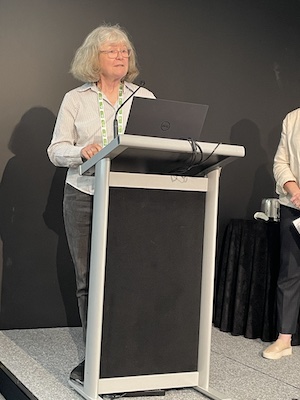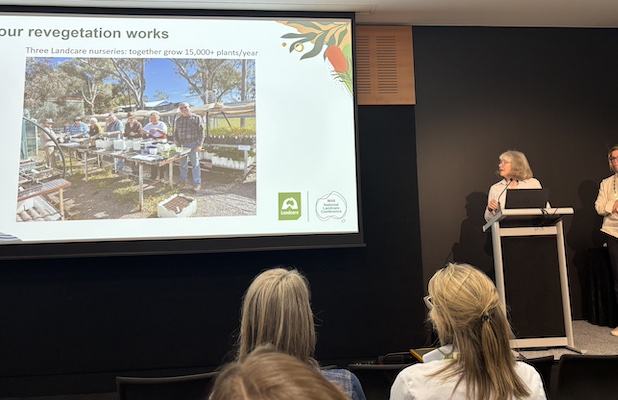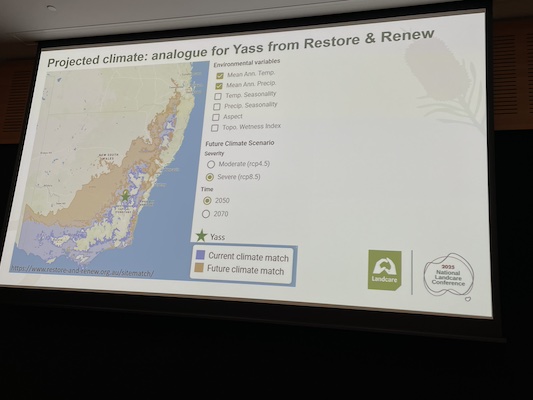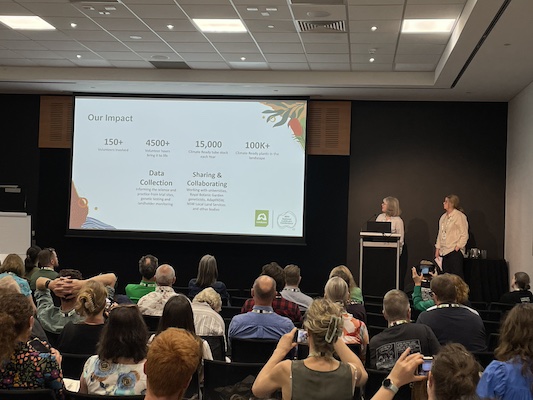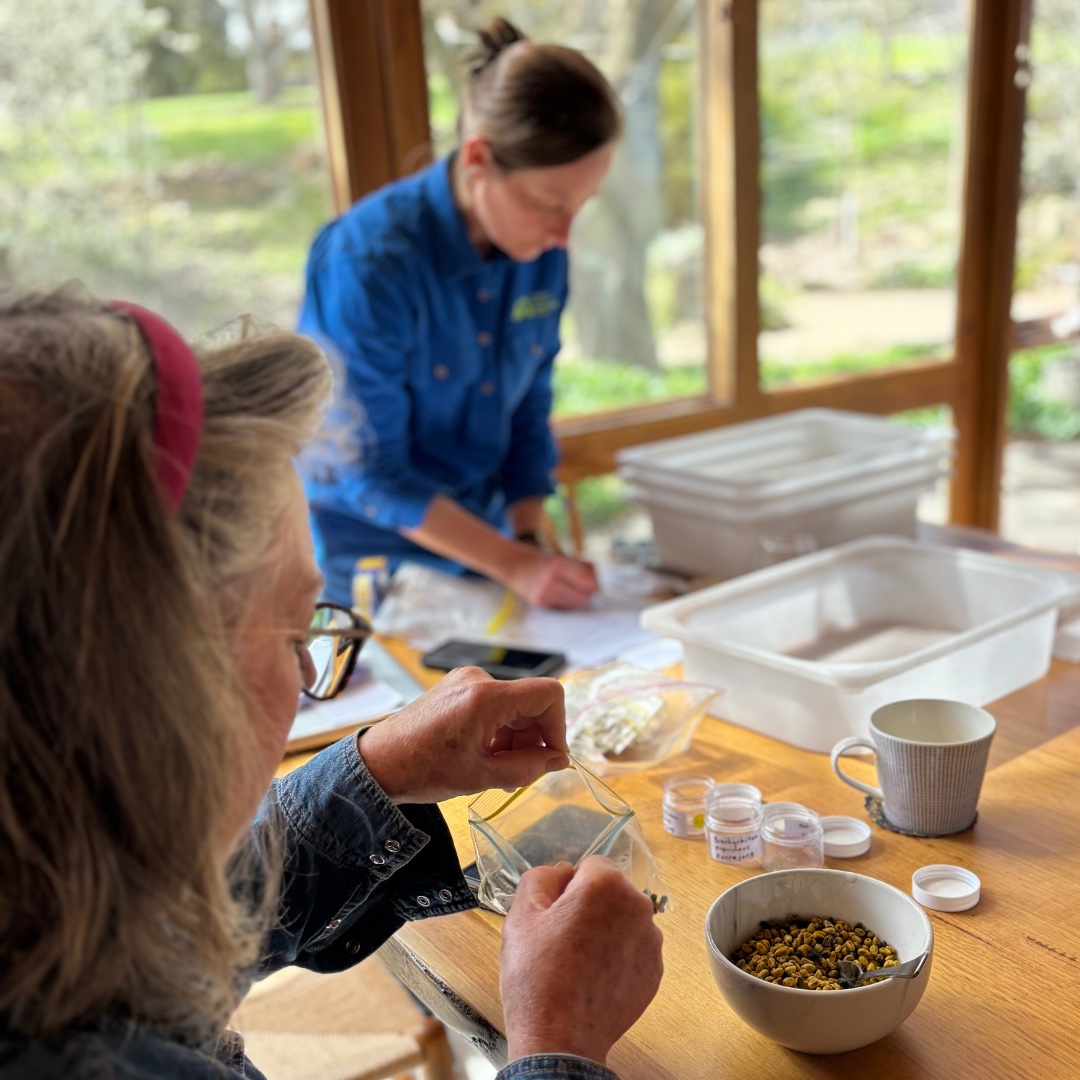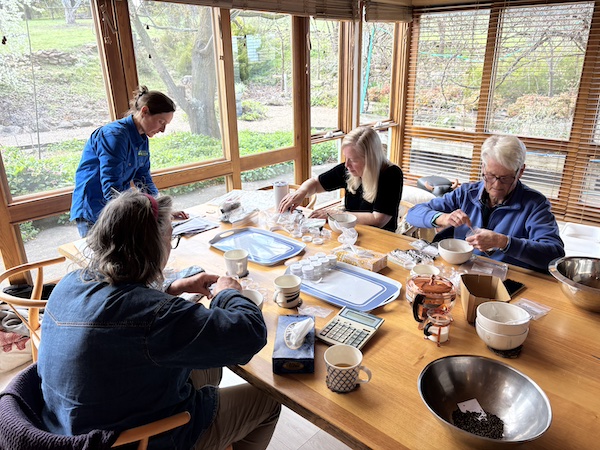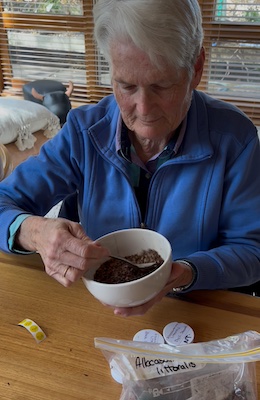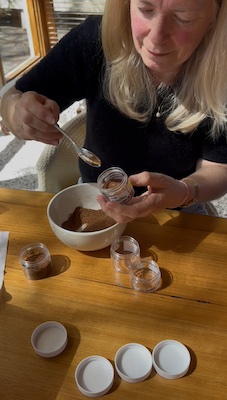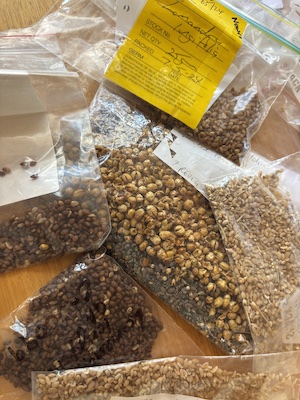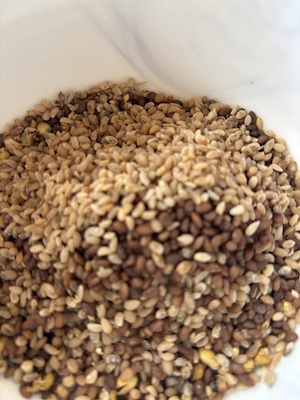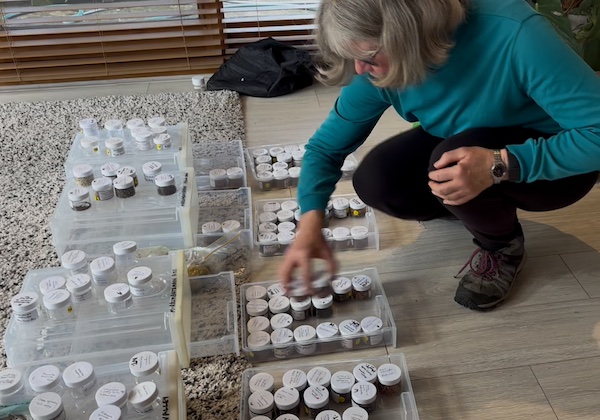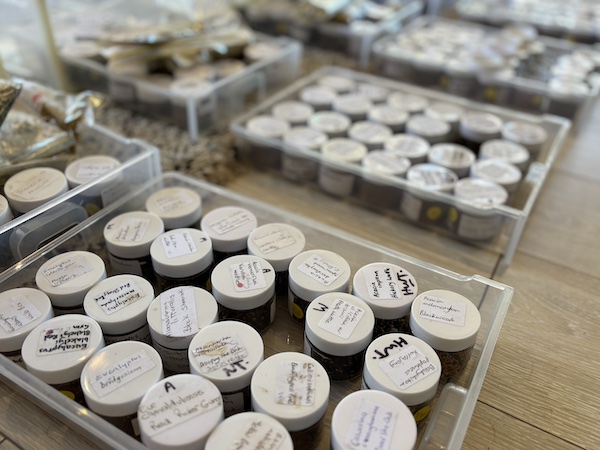The old cliché “when it rains, it pours” perfectly describes the recent opportunities we've had to share YAN’s Climate Ready Revegetation work.
Soon after Gill and Sarah’s popular presentation at the National Landcare Conference at the Gold Coast, YAN’s Climate Ready Revegetation work was presented at the Native Seed Diversity & Revegetation Workshop organised by Holbrook Landcare Network, at the AdaptNSW Forum in Sydney (see trip report below), and at a South East Landcare gathering near Nowra.
It has been great to share our approach to future-proofing our local landscapes, and equally valuable to learn what other work is being done to prepare, adapt, and build climate resilience.


Left/top: Climate Resilience Garden at Wirraminna Environmental Education Centre. Located in the Holbrook region, the Centre is well worth visiting!
Right/bottom: A visit to one of Murray Local Land Services' seed production areas in the Holbrook region was very eye opening!
AdaptNSW Forum
YAN's Climate Ready Revegetation team was pleased to be invited to present at the 2025 AdaptNSW Forum, held on November 25-26 at the Roundhouse in Sydney.
Gill Hall and Sonya Duus attended the forum and presented YAN's work as part of the session titled: ‘Resilient by Design: Adapting nature repair to a changing climate’.
In their presentation, ‘Volunteer-driven Climate Ready Revegetation in the Yass Area’, they gave an overview of YAN’s efforts. They focused on the program's foundation in the latest available science regarding climate change projections and genetic diversity, and highlighted the crucial role of volunteers in propagating and distributing climate-ready plants in the Yass area.
The presentation was well-received by a large and engaged audience, generating strong interest in our grassroots community efforts towards building ecological resilience.


Left/top: Gill Hall talking about the motivation behind YAN's Climate Ready Revegetation Program at the AdaptNSW Forum. Photo credit: Elin Bandmann
Right/bottom: Sonya Duus speaking at the AdaptNSW Forum. Photo credit: Lauren Rickards
The panel also included Maurizio Rossetto (Research Centre for Ecosystem Resilience, Botanic Gardens of Sydney), David Rissik (Risk and Resilience Specialist, BMT), and Renee Burrow (Big Scrub Rainforest Conservancy). The session was chaired by Michelle Dawson from the Cultural and Ecosystem Climate Change Adaptation Team at the NSW Department of Climate Change, Energy, the Environment and Water.
The session also involved a practical component where attendees were given the chance to explore the newly launched, updated version of the Restore & Renew webtool.

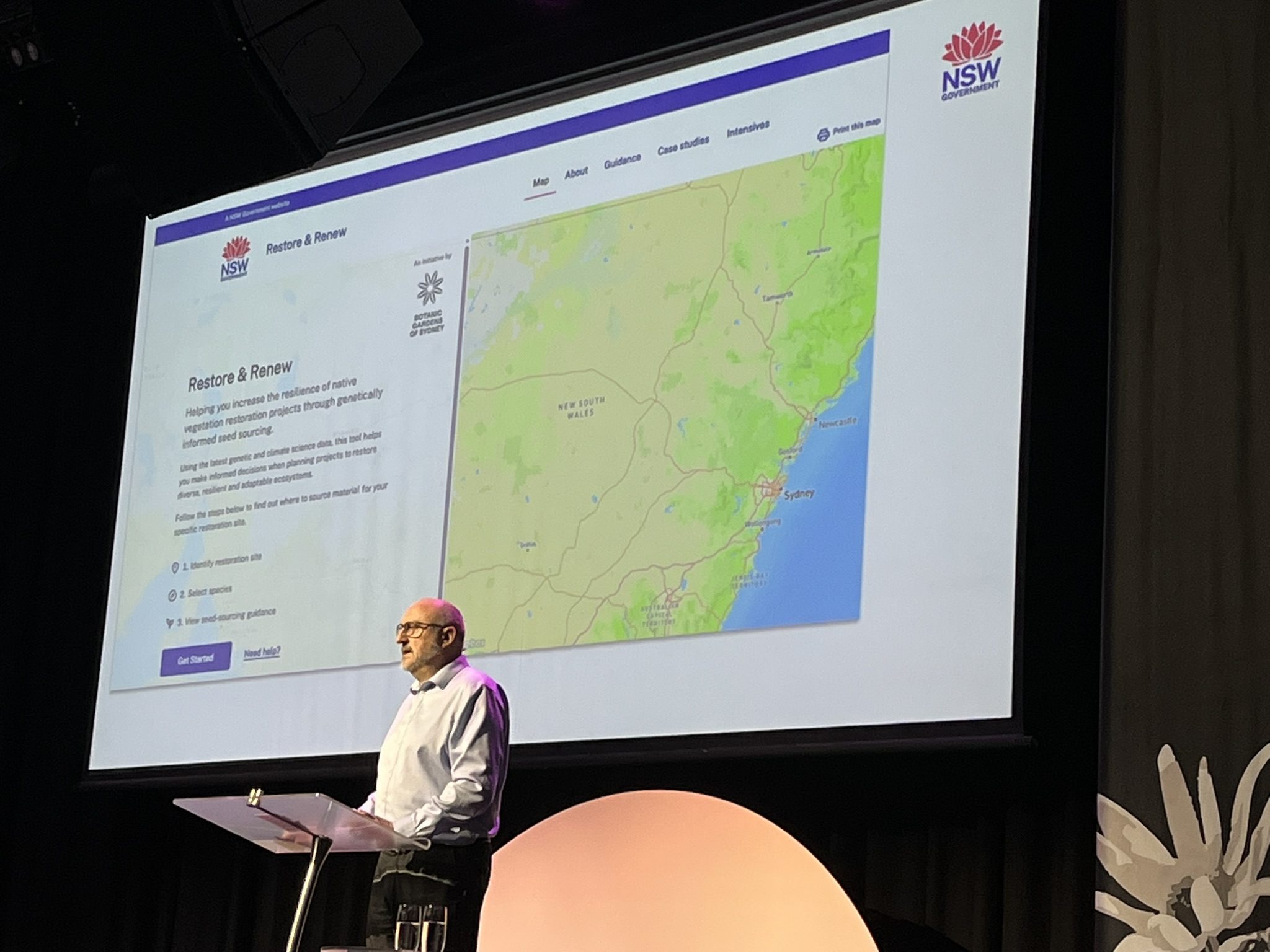
Left/top: Session participants exploring the updated Restore & Renew webtool
Right/bottom: The updated Restore & Renew webtool being launched at the AdaptNSW Forum 2025
The two-day forum's theme was "Other Ways of Knowing, Thinking, Feeling and Doing". It was great to see significant Aboriginal content and a mix of refreshingly mind-stretching concepts and methods alongside more conventional topics. The event provided a valuable opportunity to share information and connect with others working on diverse aspects of climate change adaptation.
YAN’s participation at this event was made possible thanks to funding from the NSW Department Climate Change, Energy, the Environment and Water.
Written by Sonya Duus, Climate Ready Revegetation Project Officer
The Climate Ready Revegetation Project has been assisted by the NSW Government through its Environmental Trust. Landcare Australia Michael King grants enable us to purchase seed from diverse provenances.


